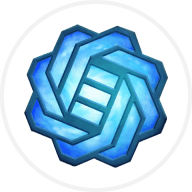Radio Caca (RACA) is attempting to create its own space within the metaverse, leveraging the growing interest in this major crypto trend that emerged in 2021. The crypto world has been captivated by the metaverse, creating countless virtual worlds, including games, digital land plots, galleries, and more.
Today, the metaverse remains a prominent crypto technology, combining non-fungible tokens (NFT), artificial intelligence (AI), machine learning (ML), virtual reality (VR), and augmented reality (AR) in a single digital realm. Radio Caca aims to be part of this immersive digital landscape, offering unique experiences and opportunities for its users.
What is Radio Caca?
Radio Caca is a decentralized autonomous organization (DAO) focused on developing the Universal Metaverse platform. This project operates within the Web3 ecosystem and was initially initiated by the Maye Musk NFT Dog community.
With strong support from Consensys Mesh Tachyon, the parent company of the popular crypto wallet app MetaMask, Radio Caca boasts one of the largest Web3 communities in the crypto space, spanning over 29 fanbase regions. Its follower count reaches hundreds of thousands of individuals across various social networks, such as Twitter, Telegram, and Discord.
The Radio Caca team
The Radio Caca team was established in May 2021 by Jeff Watney, an entrepreneur based in California. Over time, the project has expanded its team by incorporating developers from various regions, including Asia, Europe, and Silicon Valley.
How does Radio Caca work?
Radio Caca's journey began in 2021 with the launch of the RACA NFT marketplace. In less than seven months, the project achieved a remarkable trading volume of over 682 billion RACA, equivalent to approximately $1.3 billion based on the RACA price as of April 6, 2022. The platform boasts the Universal Metaverse, which hosts its pioneering play-to-earn (P2E) game, Metamon.
The team envisions the introduction of more blockchain games and numerous NFT collections available through their marketplace. Additionally, the marketplace facilitates the trading of in-game assets. Radio Caca operates across multiple blockchains, including Binance Smart Chain (BSC), Ethereum, OEC, and Solana.
RACA: Radio Caca’s native token
RACA is the native cryptocurrency of Radio Caca's ecosystem, introduced in August 2021. Its value has remained relatively low, never exceeding a fraction of a cent. The token has a maximum supply of 500 billion units, and the total supply is 431.4 billion RACA. As of June 2023, approximately two-thirds of the maximum supply is in circulation, amounting to 334.65 billion tokens.
RACA use cases
RACA serves as the governance token of the project, providing its holders with voting rights on proposals and enabling them to submit new ideas. Additionally, it powers the metaverse and is utilized within the NFT marketplace. Beyond that, RACA can be used for crypto trading and investment purposes.
Distribution of RACA
RACA is distributed as follows:
- 63.54 percent is distributed to the Radio Caca community.
- 25.24 percent is allocated to the RACA DAO.
- 11.22 percent is RACA DAO’s income from NFTs, games and markets.

















